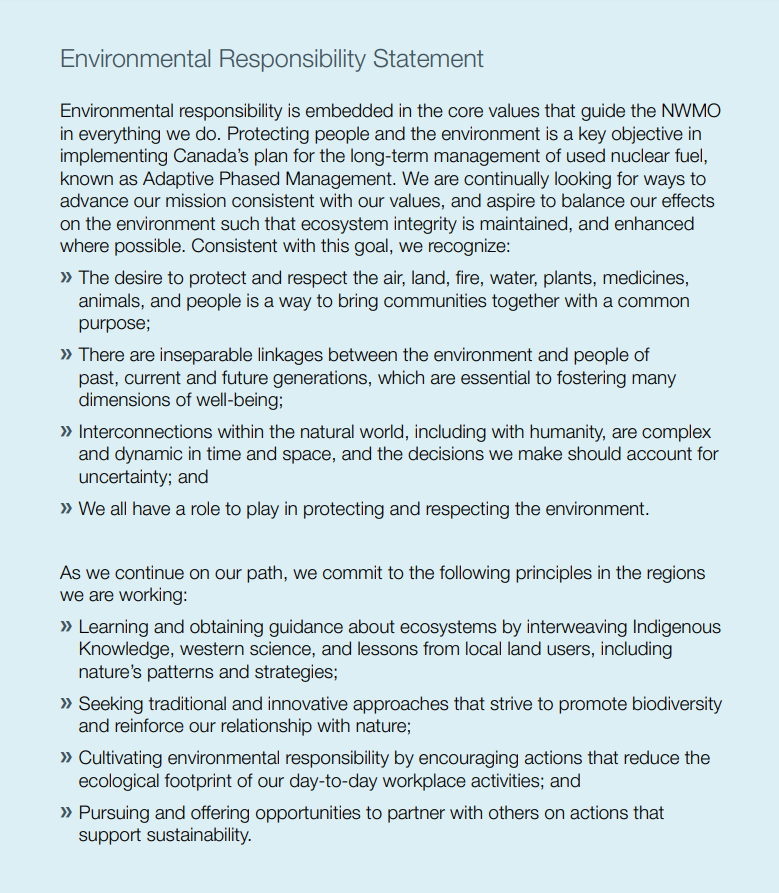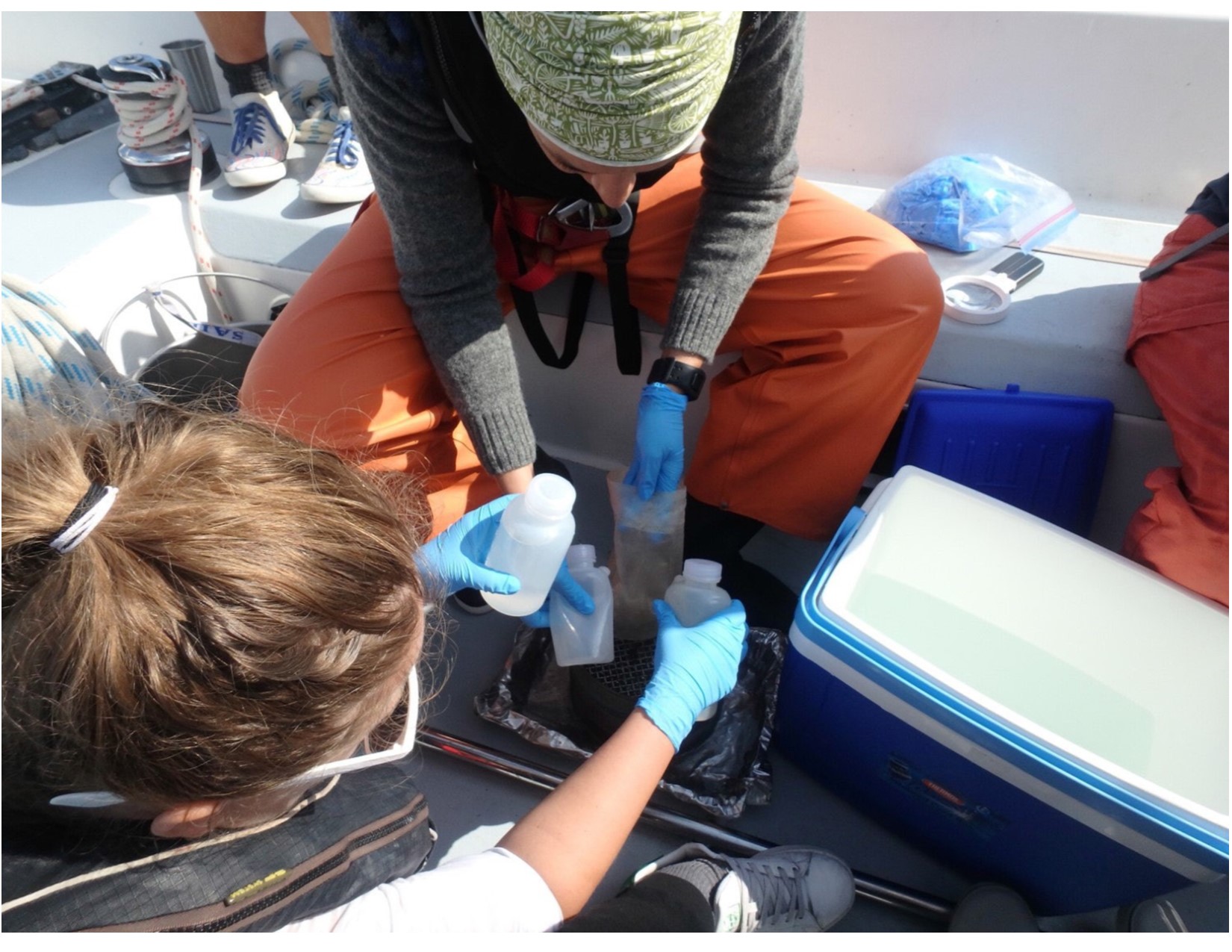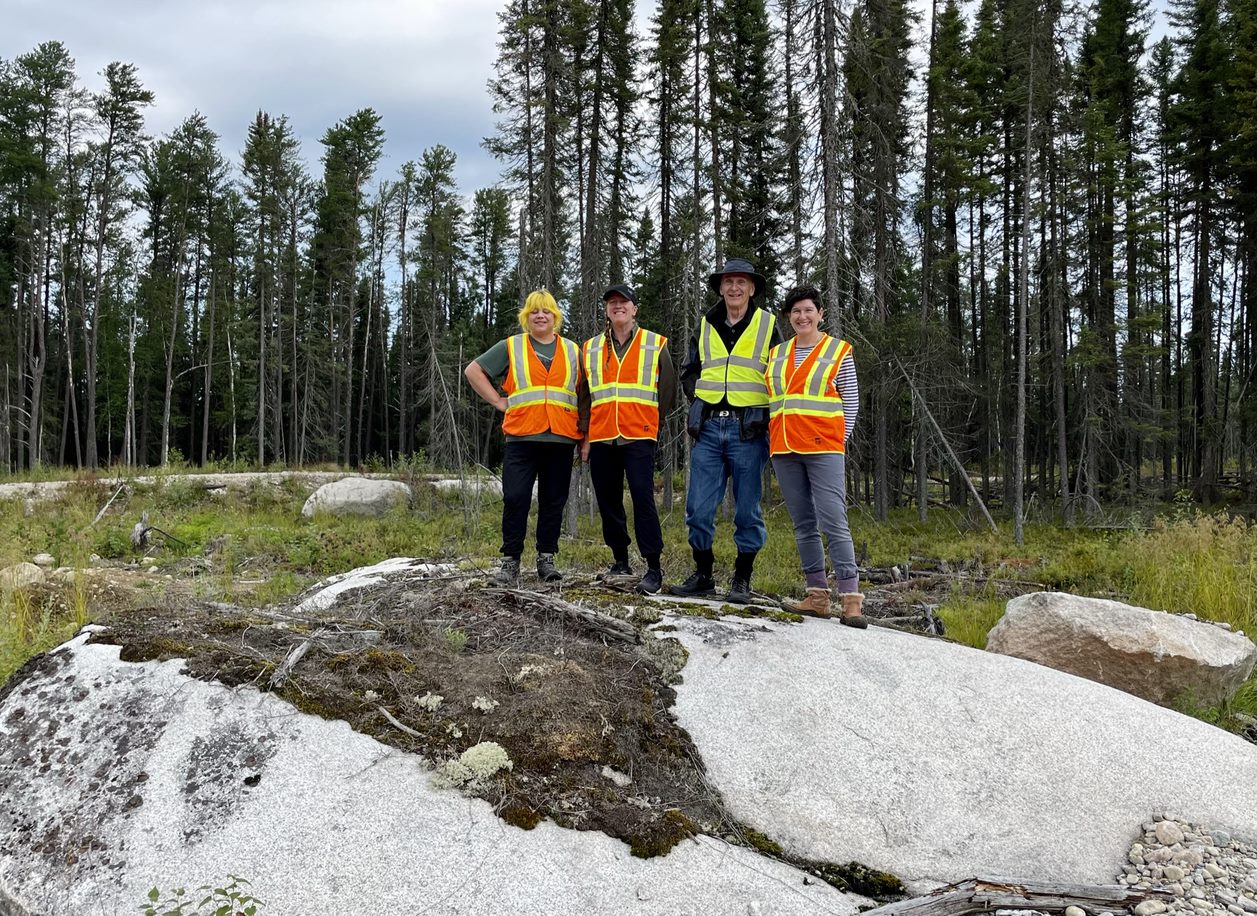Protecting the environment
Our Environmental Responsibility Statement
At the suggestion of the Advisory Council in 2016, the NWMO began developing an Environmental Responsibility Statement that outlines our commitment to environmental sustainability as we move forward with implementing Canada’s plan.
The statement articulates how we are going to protect the environment and support sustainability in our daily practices. It builds on environmental principles we have already put into practice and also defines our vision of what can be achieved. The NWMO will continue to incorporate the Environmental Responsibility Statement into our plans as we look ahead to the implementation of the project at a selected site.

Environmental regulation
The NWMO is committed to meeting or exceeding all applicable regulatory standards and requirements as we implement Canada’s plan.
The project we are implementing will be regulated by the Canadian Nuclear Safety Commission (CNSC), which works in co-operation with other federal, provincial and municipal government departments and agencies, in areas such as public and worker health and safety, environmental protection and transportation.
The CNSC uses a comprehensive licensing system to ensure the environment is protected throughout the entire life cycle of a deep geological repository. It requires that adequate environmental protection policies, programs and procedures be implemented.
The CNSC can only make a licensing decision on a geological repository after the completion of an impact assessment, as established by the Impact Assessment Act. An impact assessment is a process that predicts the potential environmental effects of a proposed project before it is carried out. It incorporates environmental factors into decision-making, including:
- Potential environmental effects;
- Mitigation measures;
- The significance of environmental effects that remain after mitigation; and
- Follow-up monitoring.
Environmental monitoring programs
Many of the NWMO’s environmental studies have been co-created with residents in the siting areas. The studies the NWMO has completed help communities become more informed about local and regional community well-being, as well as environmental conditions and possibilities.
Regardless of whether the project is sited in an area, the insights communities obtain from these studies provide a foundation for future community initiatives.
We have also been working with the municipalities as they build up their understanding of Indigenous Knowledge and advance their Reconciliation journeys.

Protecting water together

Environmental Review Group
In 2018, the NWMO established an Environment Review Group (ERG) to provide independent expert advice and guidance on environmental programs and impact assessment planning.
The impact assessment process involves conducting detailed analyses of the potential impacts of the project. The results of these analyses are used in the design of the project, including measures that will be implemented to mitigate or offset potential negative effects.
The ERG advises the NWMO on developing an effective impact assessment process, including engagement, aligning Indigenous Knowledge and western science, and international best practices.
The group meets quarterly (once per year in person) to discuss strategic issues relating to assessing potential impacts of the project on the natural environment.
